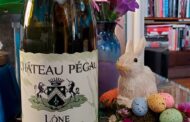Layne’s Wine Gig Presents
FAVES
By Layne V. Witherell
A few of my recent faves:
Thierry et Pascale MATROT BOURGOGNE (Chardonnay), France, 2020.
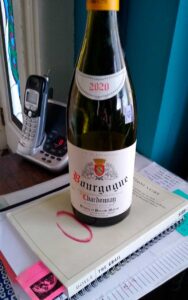
This is Burgundy from the hallowed little 35-mile strip of limestone that is home to the world’s greatest Chardonnay and Pinot Noir. The flavor of these wines isn’t the buttery, laboratory induced, high alcohol monsters of California but a creamy light fruit and mineral laden graciousness that is pure. As the quality and size of the vineyards get progressively smaller the concentration of mineral richness increases. As does the price. Sadly, the entire world is clamoring for these limited bottlings.
The simple fact is that the family vineyards are both miniscule and increasingly divided generationally (per French inheritance laws). Owning 45.5 acres of PRIME Burgundy vineyard real estate is a big deal, but when you boil down the actual little parcels it is almost incomprehensible that the world sees any of this stuff at all. Matrot’s wines come from over eleven handkerchief sized parcels, mostly less than an acre in size.
So, what does all this mean to us – the people who wish to drink it? This wine can range in price locally at retail from $20.00 to $30.00 a bottle or more. It means simply that $84.00 plus of your hard-earned dollars, should you purchase a case, just went into the retailer’s pocket – above their 30% plus percent profit. I call this Increased Profit Driven Inflation. Where there is too much demand and not enough supply this happens. Also, White Burgundy is deliriously good with lobster.
Here’s what you do. Get out your trusty phone and shop prices. Wine-Searcher.com will give you a list of sane prices. Call around to local shops and see if they have the wine or can get it at a reasonable markup.
PRAZO De RORIZ, Duoro, Portugal, 2019.
Should run around $20.00. Prats and Symington produced. This is the modern incarnation of that old classic Port, but as a dry, 12% alcohol table wine. It is still fairly under the radar in terms of demand, so you needn’t frantically price shop around.
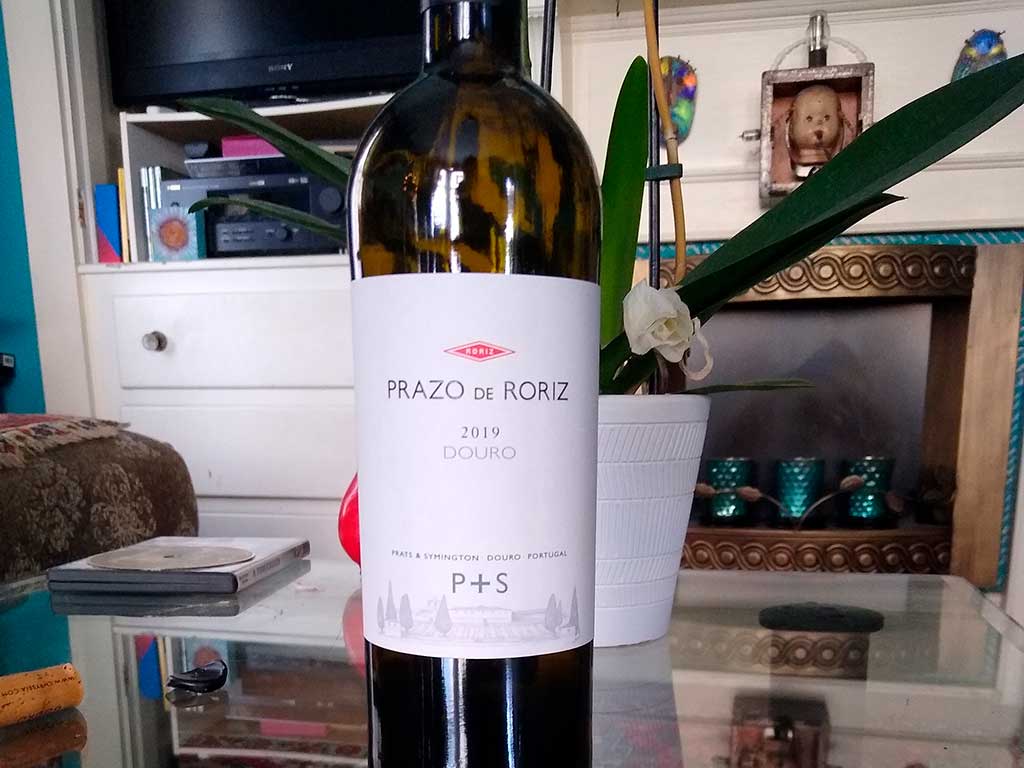
This brilliant collaboration of an old-line Bordeaux producer (Prats) and their British/Port estate owner Symington rework the local Touriga National grape into a delicious, dry, aromatic, fruity, full bodied, spicey red wine with a hint of blackberry tinge. The classic earth of Bordeaux (terroir-official word) mingling with ripe fruit and sunshine of California make this a new treat from the classic grape. There are lots of producers working on this new template. Chapoutier and Joao Portugal Ramos to name a couple. Just keep your eyes peeled.
If you wish to chase the grape, it has been planted in Priorat in Spain, Paso Robles, California, Washington State, and Australia as well. We will be seeing lots more of these wines in the future.
Should you wander down to Gordonsville, Virginia the Horton winery produces Dio (short for Dionysus, the famous Roman wine god) made from the Touriga National grapes they pioneered in the state, $30.00 per bottle.
LA CIGARRERA MANZANILLA, Sanlucar, Spain, $30.00 bottle
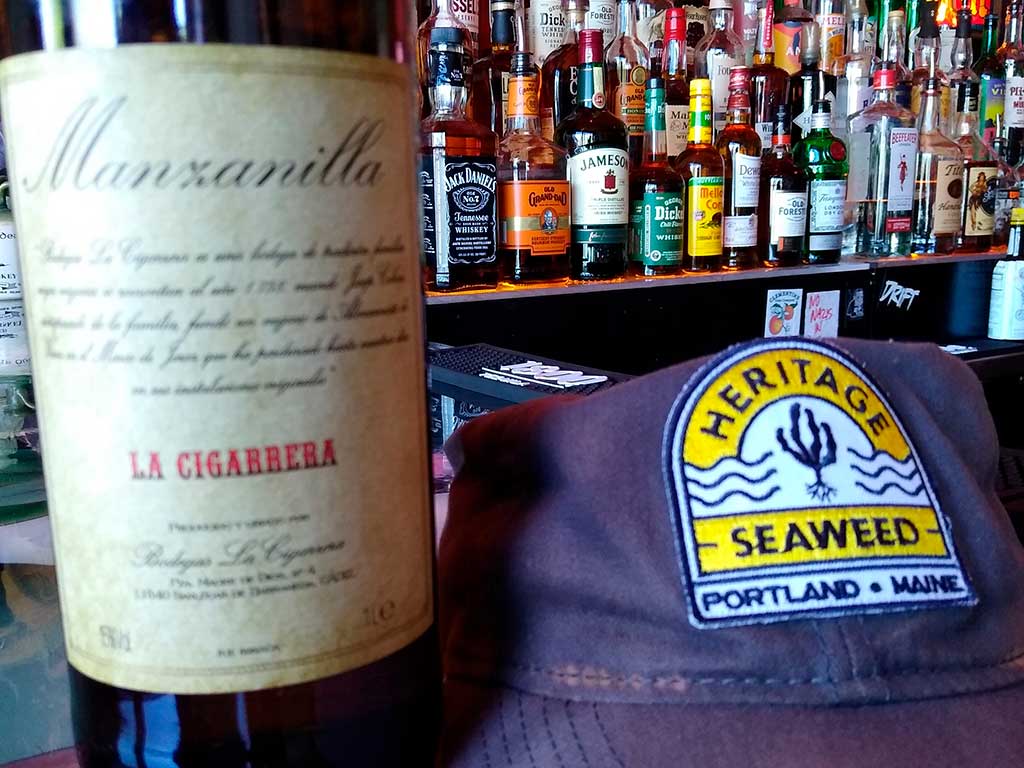
Though one of my faves, I haven’t had this wine in close to a decade. The problem with Spanish Sherry is that we expect it to change for us, or to be less complicated. Let’s get to know it better and not worry about planting new grape varieties, reducing the alcohol, or making it more of a friendly nondescript table wine. It is apropos that we discovered it once again at the newest bar for locals, The End, across from the Eastern Cemetery in Portland. Sherry exists on its own.
Great Sherry in this form and style is a saline, seaweed, and salt centric powerful drink that like its cultural counterparts – the bull fight and flamenco – look more toward the past than the present. The palomino grape, grown in chalky soil aged in ancient barrels and fortified up to 17% alcohol, is perfect in small cold pours accompanied by local ham, olives, and nuts. It is not a dumbed down concocted beverage for those frightened of gluten, calories, or alcohol.
Sherry can be the soul of Spain. I know; I have lived there.
Sherry is also both confused and misunderstood.
STYLES OF SHERRY
COOKING SHERRY: Cheap and rarely from Spain. A typical example is Kadem Gourmet Sherry Cooking Wine, gluten free, kosher. Too many to mention. FAUX in every way.
FINO: Dry, fresh, fortified, and refreshing. Drink it chilled right out of the fridge with shellfish. Store it cold.
MANZANILLA: Has a salty tang from the ocean. La Cigarrera is a small bodega of 11,000 cases named after the cigarette sellers of the 19th century. A benchmark of the region.
AMONTILLADO: Aged Sherry that is mellow and complex. Edgar Alan Poe was in his element because it was the connoisseur’s wine of the 19th century with passionate aficionados doing anything to obtain it. Read “The Cask of Amontillado” for inspiration.
OLOROSO: Dry, nutty, meaty. Great with Spanish ham.
CREAM: Your grandparents Sherry.
PEDRO XIMINEZ: Different grape nicknamed P.X. and different place in Spain. Dark, treacly, and can age forever. The best, oldest examples can fetch in the hundreds of dollars (and that’s for a half bottle!).
There are several ways to get to know Sherry. First, purchase Talia Baiocchi’s book “Sherry: A Modern Guide to the Wine World’s Best Kept Secret.” Or get out your phone and look up the Equipo Navazos website and scroll through listings of the hole-in-the-wall bodegas and wine clubs. Barbadillo is a favorite in all categories from light style cheap to the most venerable.
Start your journey at Chaval, our local French/Spanish restaurant at 58 Pine Street in Portland. They have an admirable list of well cared for Sherries by the glass with interesting authentic accompaniments to enjoy them with.
MOULIN A VENT, JEROME JANOTET, 2021, $16.99.
Another of my faves, this is not a pinot noir, and frankly, I am bored with reading about the latest “It Girl” pinot noir revolutionary discovery. No, this is a wine from a top village in the Beaujolais region of France made from the Gamay grape, which will outperform in flavor and price many overrated, overpriced pinot noirs that I have tasted this year.
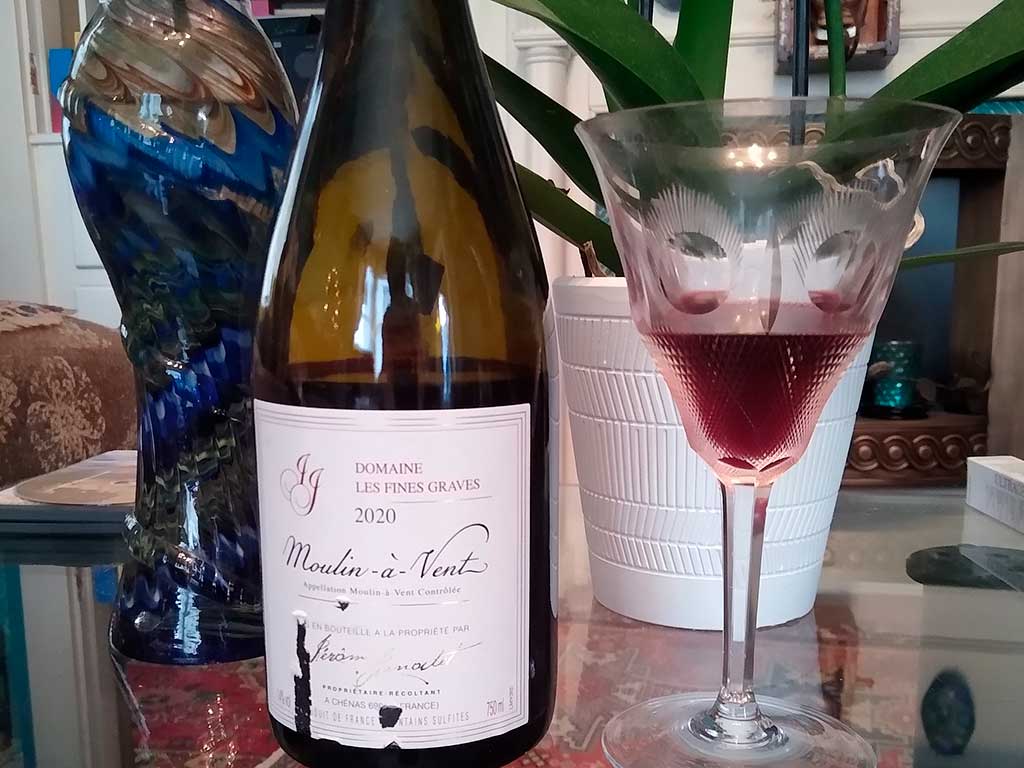
The top villages or “crus” as they are known are seriously striving to overcome the “nouveau affliction” that gave the entire region and its wines a much-deserved bad rap for both low quality and elevated prices. Nouveau was made and marketed for quick, celebratory consumption that ran out of steam a few years back.
Moulin a Vent is both the fullest bodied and longest lived of the “cru” Beaujolais, with some superb examples taking on the characteristics of both great pinot noir combined with great longevity. Some have been reported to pass the 50-year cellaring mark.
This is dark, superbly balanced, intensely fruity but not sweet and can be drunk on its own as an aperitif, with a salmon dish, or with a steak. It will last and improve its complexity over the next five plus years.
These are my faves based on a whole lot of wines tasted over the past few months. Stay tuned, there is always more to come.

